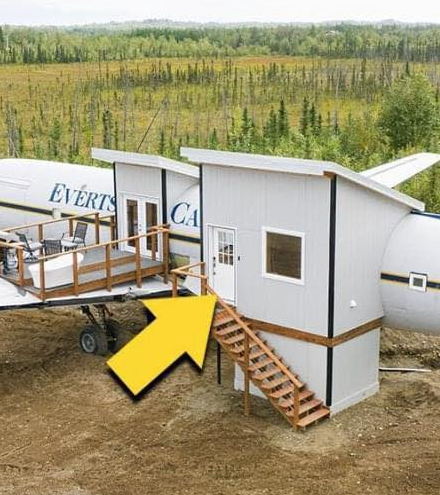
JN and Stephanie have ingeniously transformed decommissioned airplanes into an exceptional living space in Alaska. The two were able to combine a flight school with an extraordinary overnight stay opportunity.
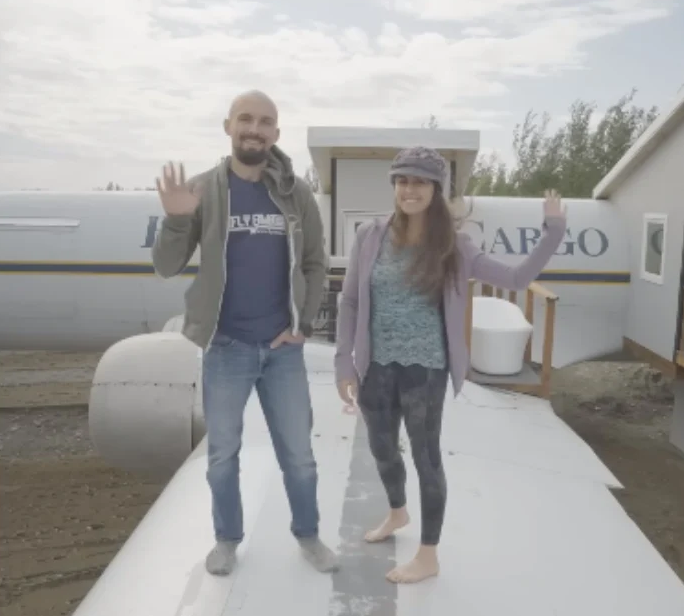
Unlike any other houses, the couple’s airplane house boasts a wing deck, an original cockpit with a flight simulator, and a working cargo door for oversized luggage.
Originally planning runways, hangars, and cabins for students, the couple pivoted during construction. They decided to repurpose a dried-in building like an aircraft to cut costs.
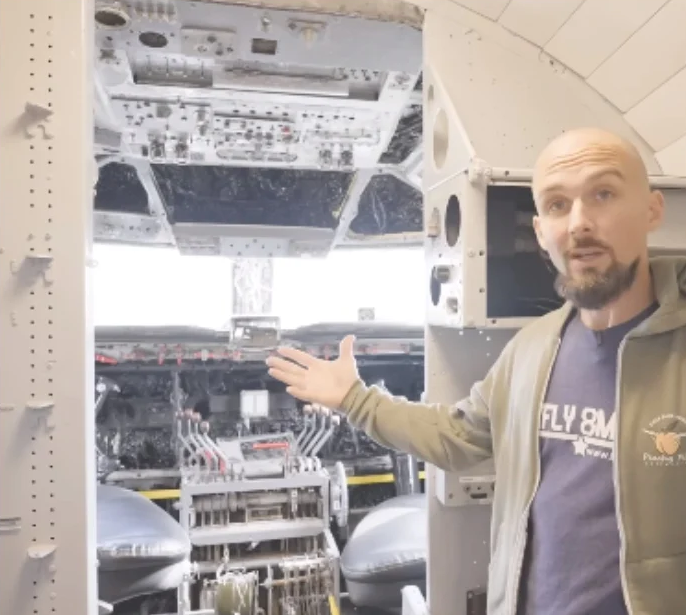
This special house comprises a Boeing 727 and a DC9 purchased as scrap metal for less than $100,000 each. However, the transport expenses, over $100,000 each, were a significant part of the investment.
Exact figures weren’t disclosed, but JN and Stephanie estimate costs exceeding half a million dollars per aircraft.
To anchor the house, the couple drove 7-inch piles 20 feet into the ground. They welded and bolted the airplane to these pipes to withstand earthquakes and strong winds.
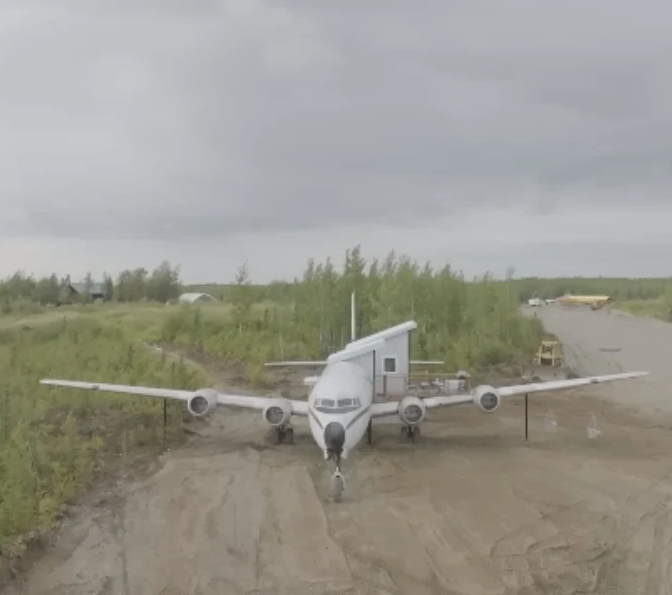
Covering around 700 square feet, the interior houses a mudroom, mechanical room, and living area. It’s made to preserve the original cargo door, a flight-sim equipped cockpit, and plans to integrate the flight controls with Microsoft’s simulator.
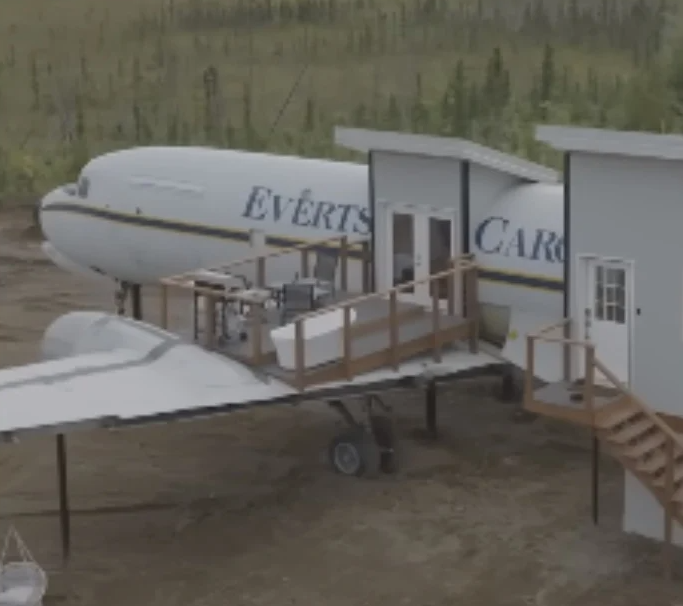
Comfort and safety in one.
Their innovative structural support system provides a secure and immovable foundation for the airplane house, promising a stable and comfortable stay.
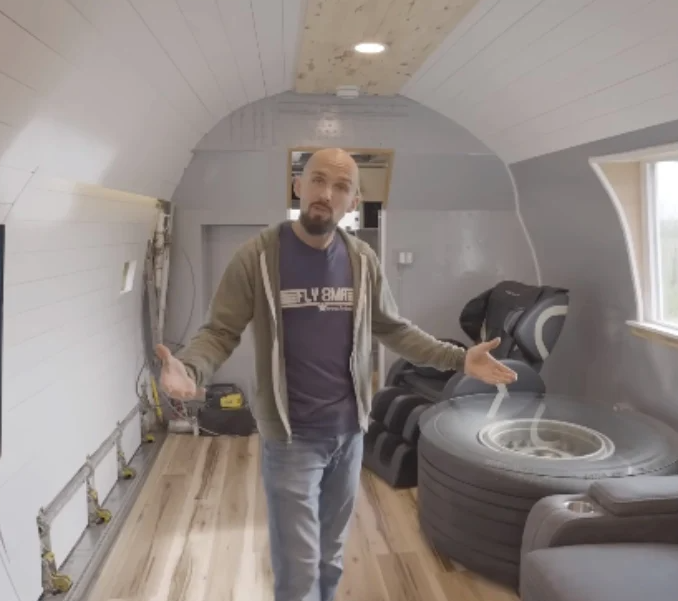
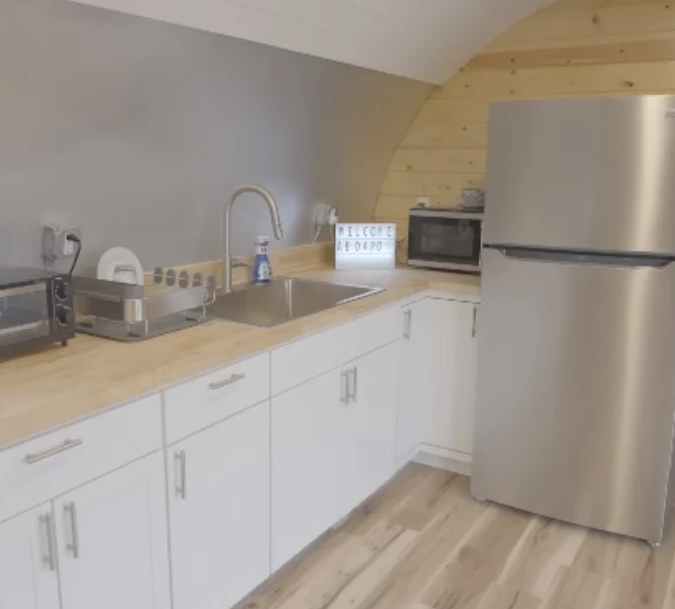
The airplane house, a brainchild of JN and Stephanie, offers a unique and unforgettable living experience.
Boasting original flight controls connected to Microsoft Flight Simulator, the house also includes amenities like a cockpit coffee station and a beer fridge.
Experience over ROI.
While the hulls of airplanes cost under $100,000, transportation expenses and other necessities can push the overall expenditure per aircraft to over $600,000.
Yet, these expenses culminate in a distinctive and unparalleled living experience.
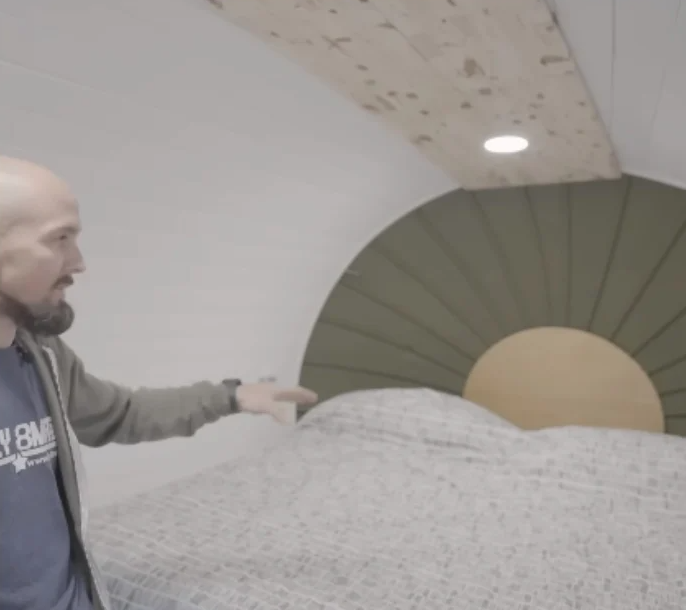
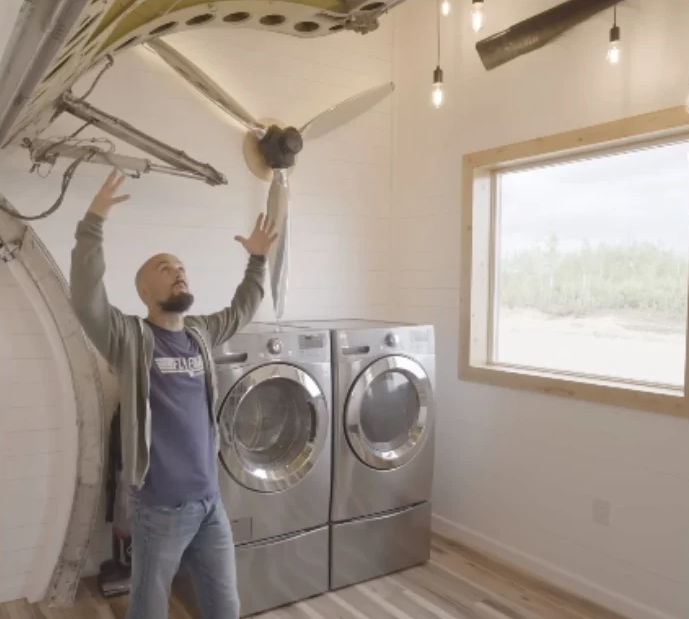
This space features an original cargo door, a mudroom doubling as dry goods storage, and a mechanical room within the tail cone housing essential utilities like a boiler, water heater, and electrical panel box.

















